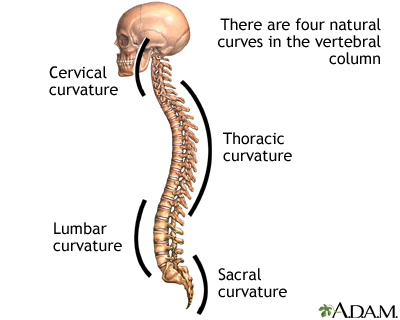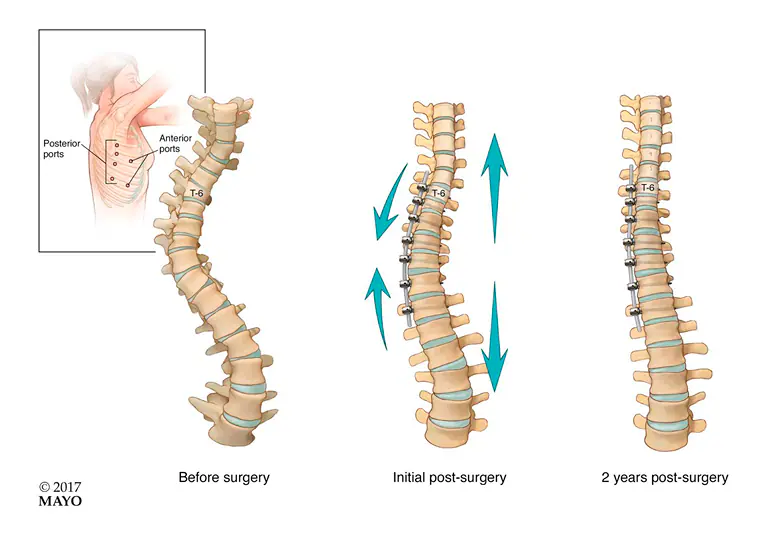
Paediatric Spinal Deformities refer to a range of abnormal conditions affecting the spine in children and adolescents. These deformities can significantly impact a child’s posture, mobility, and overall health. The spine, which consists of a series of vertebrae stacked on top of one another, is crucial for providing structural support and flexibility. When deformities occur, they can disrupt this balance and lead to various physical and functional issues.
When deformities occur in the spine, they disrupt this delicate balance, potentially leading to various physical and functional challenges. Abnormal curvatures or misalignments of the spine can cause noticeable changes in body shape, such as an uneven shoulder line, a protruding rib cage, or an exaggerated curve in the back. These changes may not only affect the child’s appearance but also their physical capabilities. For instance, a severely curved spine may restrict lung capacity, making it difficult for the child to engage in physical activities or exercise.
The impact of spinal deformities extends beyond physical discomfort; it can also affect psychological well-being. Children with noticeable deformities may experience self-esteem issues or emotional distress due to their appearance or limitations in their daily activities. This emotional strain can further complicate their overall health and development.
In addition to physical and emotional challenges, untreated spinal deformities can lead to long-term health complications. For example, conditions like scoliosis or kyphosis can progress over time, potentially worsening the deformity and leading to more severe health problems. Chronic pain, reduced mobility, and other related issues may arise, requiring comprehensive management strategies.
Effective management of pediatric spinal deformities involves a multidisciplinary approach, including early diagnosis, monitoring, and personalized treatment plans. Treatment strategies can range from conservative approaches such as physical therapy and bracing to more invasive procedures like surgical intervention, depending on the severity and progression of the deformity.
The goal of treatment is to correct or minimize the deformity, alleviate symptoms, and support the child’s overall development and quality of life. Regular follow-ups and adjustments to the treatment plan are essential to ensure optimal outcomes and address any emerging issues.
With appropriate care and intervention, many children with spinal deformities can achieve significant improvements in their spinal alignment and overall health. Early detection and personalized treatment are key to managing these conditions effectively and supporting the child’s well-being.

Pediatric spinal deformities refer to abnormal conditions affecting the spine in children and adolescents. These deformities can disrupt the normal alignment and curvature of the spine, which is essential for providing structural support and flexibility. The spine, composed of a series of vertebrae stacked one upon another, serves as the central support structure for the body, allowing for movement, absorbing shock, and protecting the spinal cord.
When spinal deformities occur, they can lead to a range of issues, including altered posture, reduced mobility, and potential physical discomfort. The most common types of pediatric spinal deformities include scoliosis, characterized by an abnormal lateral curvature of the spine; kyphosis, which involves an excessive forward curvature of the upper back; and lordosis, marked by an excessive inward curve of the lower back. Each type of deformity can affect the body in different ways, impacting not only the appearance but also the functional abilities of the child.
The effects of spinal deformities can vary widely depending on their type and severity. In some cases, they may be mild and cause minimal disruption to the child’s daily life. In more severe instances, these deformities can lead to significant physical challenges, such as pain, difficulty in movement, or complications with internal organs. For example, severe scoliosis can impact lung function, while kyphosis may affect overall posture and mobility.
Diagnosis typically involves a thorough evaluation by a healthcare provider, including physical examinations and imaging studies such as X-rays or MRIs. Early detection is crucial, as it allows for timely intervention and management to prevent progression and mitigate potential complications.
Treatment for pediatric spinal deformities is tailored to the individual needs of the child and may include options such as physical therapy, bracing, and, in some cases, surgical intervention. The goal of treatment is to correct or minimize the deformity, alleviate symptoms, and support the child’s overall development and well-being. With appropriate care, many children with spinal deformities can achieve significant improvements and lead active, healthy lives.
Paediatric spinal deformities encompass various abnormal conditions affecting the alignment and curvature of the spine in children and adolescents. Each type of deformity can present with unique characteristics and potential complications. Here are the primary types of pediatric spinal deformities:
Description: Scoliosis is characterized by an abnormal lateral curvature of the spine. Instead of a straight vertical alignment, the spine curves sideways, forming a “C” or “S” shape.
Features:
Description: Kyphosis involves an excessive forward curvature of the upper spine, leading to a rounded or hunchbacked appearance.
Features:
Description: Lordosis is marked by an excessive inward curvature of the lower spine, often referred to as swayback.
Features:
Description: These deformities are present at birth and result from abnormal development of the spine during fetal growth.
Features:
Description: These deformities arise due to trauma or injury to the spine.
Features:
Description: Scheuermann’s disease is a condition that causes a progressive kyphotic curve in the thoracic spine due to abnormal growth of the vertebrae.
Features:
Description: This is a type of scoliosis with no known cause and typically develops during adolescence.
Features:
Each type of pediatric spinal deformity has distinct characteristics and potential impacts on the child’s health and development. Early diagnosis and personalized treatment plans are essential for managing these conditions effectively and supporting the child’s overall well-being.
In addition to the common symptoms previously mentioned, pediatric spinal deformities may present with other symptoms that vary depending on the severity and type of the deformity. These additional symptoms can include:
These additional symptoms highlight the diverse ways in which spinal deformities can impact a child’s overall well-being. Comprehensive evaluation by a healthcare professional is essential to address these symptoms and develop an appropriate treatment plan.
In conclusion, pediatric spinal deformities encompass a range of conditions that can significantly impact a child’s posture, mobility, and overall quality of life. From scoliosis and kyphosis to lordosis and congenital deformities, each type presents unique challenges and symptoms that require careful management. Early detection and tailored treatment plans are crucial for addressing these issues effectively and supporting the child’s development and well-being.
If your child is exhibiting symptoms of spinal deformities, seeking the expertise of a qualified professional is essential. Dr. Amit Deora, a renowned neurosurgeon in Indore, specializes in diagnosing and treating spinal conditions with precision and care. Additionally, consulting a skilled neurologist in Indore can provide a comprehensive approach to managing any neurological symptoms associated with these deformities. Addressing these conditions early with the right medical support can significantly improve outcomes and enhance your child’s quality of life.